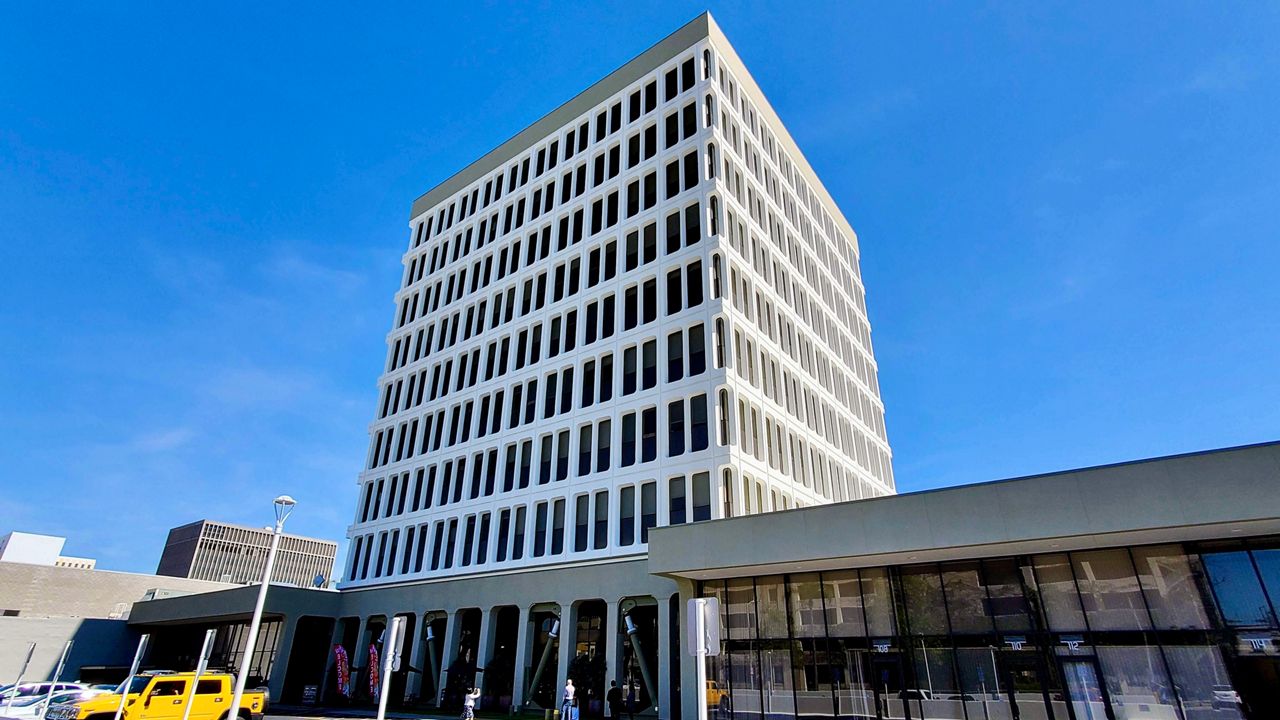CALABASAS, Calif. — President Joe Biden's initiative to convert more office buildings into multifamily apartments has some local housing developers cautiously optimistic about the plan.
"I think it's great, but it still requires a lot of stars to align," said Eddie Lorin, co-founder and chief executive officer of Alliant Strategic Development, an affordable and workforce housing developer in Calabasas. "This is just the first step."
Biden announced last week that the administration would make converting office buildings into residential units easier for housing developers by offering billions of loans at below-market interest rates and identifying and marketing surplus federal properties representing the best commercial-to-residential opportunities.
The administration also plans to create "a new interagency working group to develop and advance federal funding opportunities that support the conversion of commercial properties to housing, and leverage climate-focused federal resources to create zero emissions and affordable units."
The coronavirus pandemic and pandemic-related restrictions have reshaped how people live and work.
Over one-third of households work remotely, with workers only going into an office about 3.5 days a week, the White House said.
Some employers have ditched their pricey office space in favor of a remote working environment, and those that haven't have embraced a hybrid model, where workers come in only a few days out of the week.
The impacts on commercial business districts have been profound. Some downtowns that once had massive foot traffic — from office employees and tourists — have gone deserted. Many retailers in San Francisco's central business district have left.
White House officials said commercial real estate investment volumes fell by 64% year-over-year and office vacancies reached a 30-year high of 18.2% nationwide.
"The vacancy rates have reduced foot traffic to the 'office adjacent" economy, reducing demand at local businesses, including restaurants, dry cleaners, convenience stores, retailers, and hair salons,'" the White House report states.
In downtown Los Angeles, the office vacancy rate in the second quarter has jumped three percent from 20.3% to 23.6% year-over-year, according to the Downtown Center Business Improvement District.
"Vacancy continued to rise as uncertainty about return-to-work continued to dampen leasing activity across Southern California," the DCBID quarterly market report states.
Sonnet Hui, general manager and vice president for Project Management Advisors, Inc., said Biden's initiative is needed. The initiative, she said, is a great way to incentivize developers and a "step in the right direction" to meet the nation's housing needs.
"We have a housing crisis and affordability crisis," said Hui. "Unless supply begins to outweigh demand, I think housing will be in high demand in these markets."
Converting office buildings into residential units, however, is easier said than done, Lorin said.
Alliant Strategic last year completed the conversion of Orange County's former Social Services Administration building into a high-rise apartment in Santa Ana.
Lorin said there are a lot of infrastructure issues housing developers need to consider before converting an office building into an apartment or condominium.
"We have to look at the floor plates, plumbing, fire annunciator panel, the basement and if we're converting an office building in California, we have to look at possible earthquake retrofitting, depending on the age of the building, which could cost an additional $7 million to $8 million," he said, adding that plumbing, electrical, windows and HVAC are other issues to contend with.
One bright spot is that "at least a lot of these office buildings have great parking situations," he joked.
But what's going to happen to the office industry?
Pension funds, investors and owners have poured millions into investing in office buildings. What's going to happen to those? Not to mention, many office buildings in major downtowns are a large part of a city's tax base.
"I think we're going to see some owners sell their commercial property at a loss," said Hui. "Landlords need to collect rent. They can't afford to sit and wait."
Hui added that only some office buildings would be conducive to this type of conversion.
Out of 100 office buildings, half might have the bones and structure to be converted into a residential building.
"Not every office building is right for this type of conversion," she said.
Biden has yet to release the nuts and bolts of the initiative and how developers could qualify for the low-interest loans.
Lorin of Alliant Strategic said the housing crisis isn't going to be solved overnight. Biden's initiative could help, but it's not the end-all solution.
"It's going to take time," he said. "This is just a first step."



